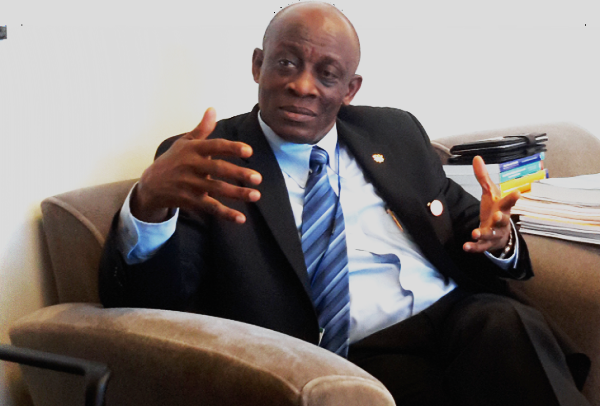A former Minister of Finance, Seth Terkper, has accused the government of misapplying GH¢661.5 million of the energy sector levies (ESLA)
“These were not part of the ‘legacy’ debt in the 2015 ESLA Memorandum,†he stated.
He said the PRG also suggested that the Electricity Company of Ghana (ECG) was unable to pay for the SANKOFA “gas-to-energy†letter of credit (LC) waterfall payment arrangement.
The government, through a certificate of urgency, passed the Energy Sector Levies Act (Act 899) in December 2015, which took effect in January 2016.
The act provides for the harmonisation of major energy sector levies and taxes to mobilise revenue to service government debts in the road and the power sectors.
The former minister was of the conviction that the use of part of the proceeds to service pension arrears was an affront to the legislation.
Strategic stocks and BOST refund
Seth Terkper also said the 2016 ESLA report noted that the Ministry of Finance (MoF) released GH¢189.39 million to the Bulk Oil Storage and Transportation (BOST) Company to start the strategic oil stocks scheme as an alternative to subsidy payments.
He said that scheme stabilised pump prizes from the end of 2015 through 2016.
“However, the 2017 ESLA Report notes that an amount of GH¢189.39 million was transferred to BOST for the procurement of strategic oil stock in 2016 and as of end-December 2017 BOST had refunded GH¢120 million, leaving an outstanding balance of GH¢69.39 million,†he stated.
“This quote is
Flows and uses of ESLA in 2016
Regarding on the flows and uses of ESLA in 2016, he said the MoF used the actual and estimated ESLA flows in a ‘cascade’ model to pay US$250 million and restructured GH¢2.2 billion of debts owed to 12 domestic banks — paying both principal and interest in five years.
By end-2016, he said, the MoF had paid two quarterly instalments of GH¢228 million.
He said the successful model used the ‘ring-fenced’ flows to pay the banks directly to settle NPLs due from the Volta River Authority (VRA), the Tema Oil Refinery (TOR) and the Bulk Oil Distribution Companies (BDCs).
Seth Terkper noted that about GH¢2 billion of the total annual ESLA flows was also dedicated to settling energy and road sector debts.
“It was possible to use these funds to ease the pressures facing the banking sector without further loans,†he stated.
Road arrears
He said the enhanced (ESLA) road levy was used to restructure over GH¢1 billion of road fund debt to contractors and creditors, including a loan due to the Social Security and National Insurance Trust (SSNIT) since 2010.





